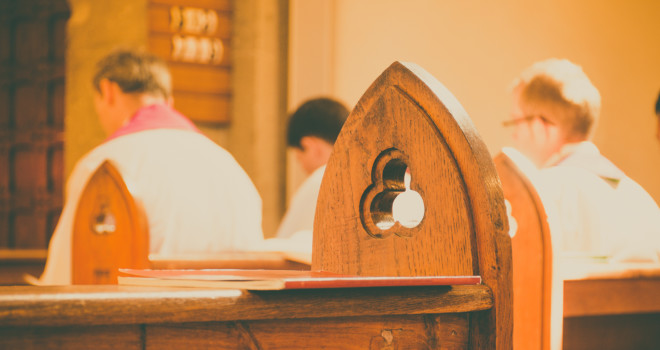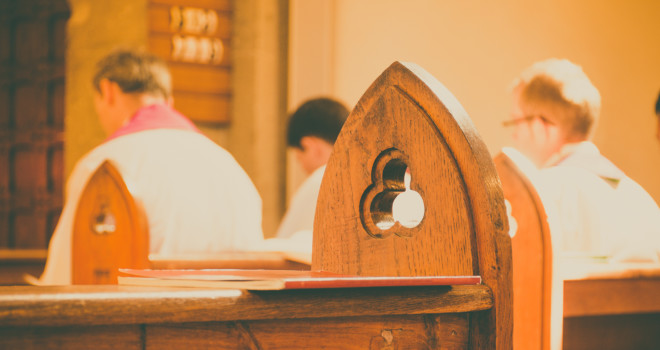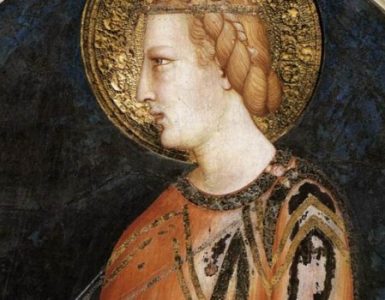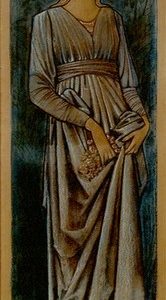The promise of the Liturgy of the Hours calls the soul to faithfully pray the liturgical prayer of the Church daily. The Liturgy of the Hours unites the totality of the Catholic Church throughout the whole world. Catholic means universal and indeed it is a Catholic prayer, uniting peoples in prayer in every part of the praying world. The languages might be different, but the prayers—most of which are the Psalms—are prayed by the whole Church.
Not only are deacons, priests and religious called to pray the Liturgy of the Hours, but also the Laity. The universal call to holiness can be fostered by dedicating yourself to praying the Liturgy of the Hours.
How can we understand the abundant fruit from praying the Liturgy of the Hours? It will take some time and effort to learn to pray the Liturgy of the Hours, but it is definitely worth the expenditure of time and effort. Given that the Liturgy of the Hours is an invaluable tool, not only to learn the art of prayer, but to unite us with God, the Church and the entire Mystical Body of Christ.
Let us highlight some essential aspects of the Liturgy of the Hours. Let these aspects motivate us to undertake this most noble of practices. Indeed, once you grasp how the Liturgy of the Hours can be prayed and its countless benefits, it becomes a practice that many never abandon!
1. Biblical Prayer
Of paramount importance, the Liturgy of the Hours is primarily a Biblical prayer. Praying by means of using the Word of God has a special power and impact that comes with it.
2. Psalms
The very heart of the Liturgy of the Hours are the Psalms. Indeed, of all the prayer books, there is no prayer book that can surpass the Book of the Psalms. Many of the 150 Psalms have as their author, King David. However, the key and essential author of the Psalms is God Himself—the Holy Spirit.
3. Jesus, Mary and St. Joseph
As a motivation for all of us to pray the Psalms, as well as the Liturgy of the Hours, it is helpful to know that the Holy Family prayed the Psalms, on pilgrimage to the Temple of Jerusalem, and in the synagogue. Let us follow in the footsteps of the Holy Family and undertake the praying of the Psalms and the Liturgy of the Hours.
4. Follow the Example of the Apostles
By praying the Psalms, we are following in the footsteps of the Apostles. The Acts of the Apostles portray the Apostles going to the Temple at set Hours for prayer. So, it is with the Liturgy of the Hours: we go to God in prayer at set times during the day.
5. Sanctify the Hours
Another key element of the Liturgy of the Hours is the command of Our Lord to pray always and to never give up heart. (Lk. 18:1) By praying the Liturgy of the Hours we are summoned to pray at different hours of the day—actually from Morning to Night.
6. Different Hours of Prayer in the Liturgy of the Hours
In the Liturgy of the Hours, there are actually five different times designated for prayer; these five different times are sanctified. When are these specific times? Morning Prayer (upon rising until 10 a.m.); Midday Prayer (10 a.m. to 4 p.m.); Evening Prayer (4 p.m. to 8 p.m); Night prayer, before retiring for the night.
The last prayer in the Liturgy of the Hours is The Office of Readings. We can do this prayer any time during the day.
The last prayer in the Liturgy of the Hours is The Office of Readings. We can do this prayer any time during the course of the day.
The last prayer in the Liturgy of the Hours is The Office of Readings. This prayer can be done any time during the course of the day.
7. The Two Prime Time Hours of Prayer: Morning Prayer, Evening Prayer
The two principal hours of prayer in the Liturgy of the Hours would be Morning Prayer (also called Lauds); then Evening Prayer (also call Vespers). Consider these the prime hours of prayer in the Liturgy of the Hours. By praying them at the designated time brackets, the Morning hours are sanctified as well as the Evening hours.
In a word, by constant and assiduous praying of the Liturgy of the Hours, our lives are being sanctified, thus our holiness blossoms and flourishes.
8. Composition of the Liturgy of the Hours
As mentioned earlier, the essence and heart of the Liturgy of the Hours is the 150 Psalms. We pray all 150 Psalms in the Liturgy of the Hours on a monthly cycle. They are divided into four weeks.
9. Following the Church Liturgical Cycle
The Liturgy of the Hours follows the same cycle and rhythm of the Church Liturgical Year, the rhythm of the Mass calendar. So the Liturgy of the Hours follows the normal cycle of the Life of Christ, lived out and expressed in the Sacraments, most especially the Mass.
The Church cycle would be: Advent culminating in Christmas and the Christmas Season, then Ordinary Time (short). Then Lent and the Lenten Season, culminating in Easter. Then the fifty-day Easter Season ends with the celebration of Pentecost, the coming of the Holy Spirit.
We then return to the long period of Ordinary Time, lasting close to six months and ending with the celebration of the Solemnity of Christ the King. The Calendar begins again at the start of the Church Year with Advent.
10. The Santoral
Another very important dimension of the Liturgy, as well as the Liturgy of the Hours, is that of the Santoral. By Santoral, it means the celebration during the Church Year, in the Masses and the Liturgy of the Hours, or from the lives of the saints. In the Liturgy of the Hours there will be a separate antiphon and hymn, a special reading for the saint, as well as a closing prayer to honor the virtues of the specific saint.
The richness and the variety of God’s friends, the saints, is impressive. These great men and women spur us on to pursue holiness in our own lives.
11. What Else
Besides the Psalms, in the Liturgy of the Hours there are other elements:
- An opening hymn,
- short Biblical Reading,
- Responsory,
- Canticle of Zechariah (Morning Prayer);
- Canticle of Mary (Evening Prayer).
Then there are prayers of intercession for the Church and the world at large in both Morning and Evening Prayer. Finally, we pray the Lord’s Prayer, followed by a closing blessing.
12. Prayed With Whom?
The Liturgy of the Hours can be prayed alone by oneself. God hears our prayers, whether we pray individually or collectively. However, the Liturgy of the Hours can be prayed collectively in a group. As a priest and Religious, I regularly pray the Liturgy of the Hours in the Morning with a fellow-priest. When done in a group, the prayer of the Psalms is alternated.
13. Lay Participation
Over the past years, the Laity have formed groups in which they come together in prayer and in praying the Liturgy of the Hours. At times, there is a combination of the Laity praying with priests and Religious. Actually, in the monthly publication of the Magnificat, there is inserted the Liturgy of the Hours—both Lauds (Morning Prayer) and Vespers (Evening Prayer).
14. Modes of Praying the Liturgy of the Hours
Contemplative monks, as well as Sisters, often have formed the habit of not only praying the Liturgy of the Hours, but praying through song or chant. As Saint Augustine asserts: “He who sings, prays twice!” So, it is with the Liturgy of the Hours.
15. In a Mass
Furthermore, the Liturgy of the Hours can be prayed in the context of the Mass. The prayer is indeed called The Liturgy of The Hours. Thus, it can be inserted within the context of the Liturgy, the Mass itself.
16. Electronically
The Liturgy of the Hours, in its totality, comprises four big volumes. However, especially for those who travel, one can get an app like I Breviary and pray the Liturgy of the Hours electronically on your phone or other electronic devices.
17. The Fruits of Praying the Liturgy of the Hours
The positive fruits of praying the Liturgy of the Hours are many:
- (1) ENRICH YOUR PRAYER LIFE. Of course, by praying the Hours, your prayer life will grow robust.
- (2) BIBLICAL KNOWLEDGE. Also, by praying the Hours your Biblical knowledge will increase.
- (3) MEMORIZE VERSES. In time, you will start to memorize certain verses and themes and this will be part of your memory and intellectual formation.
- (4) UNION WITH THE CHURCH. Praying the Hours unites you more firmly with the Mystical Body of Christ, which is the Church and its members.
- (5) SANCTIFICATION. Praying the Hours redounds on the Church itself. Not only are you praying with the Church, but you are praying for the Church.
- (6) INTERIOR PEACE. True prayer produces interior peace of heart, mind, and soul.
- (7) PRAYER DISCIPLINE. Many of us lack order and discipline. By praying the Hours at a set time and place, we can begin ordering the disordered in our lives and have the discipline that often we lack.
In conclusion, after this brief explanation, the Liturgy of the Hours and its many fruits, we hope you will seriously consider undertaking the marvelous practice of praying the Liturgy of the Hours and reap an abundant spiritual harvest.
✠
Editor’s note: Along with this article from Fr. Looney, we’d like to recommend the book A Layman’s Guide to the Liturgy of the Hours by Fr. Timothy Gallagher. You can preview this book in the following articles from Catholic Exchange:












